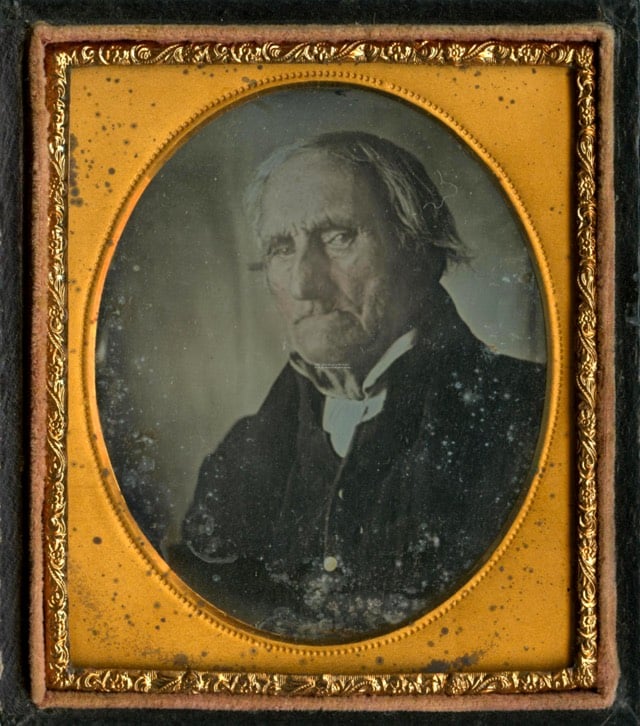Photographic Firsts and the Earliest Born Person Ever to Be Photographed
From Petapixel, a list of photographic firsts, including the first photograph (1826), the first digital photograph (1957), the first photo of the Sun (1845), and the first photograph of a US President (1843).
John Quincy Adams, the sixth President of the United States, was the first president to have his photograph taken. The daguerreotype was shot in 1843, a good number of years after Adams left office in 1829. The first to have his picture taken in office was James Polk, the 11th President, who was photographed in 1849.
Adams was born in 1767, which got me thinking about a long-standing interest of mine: who was the earliest born person ever photographed? The Maine Historical Society believes Revolutionary War vet Conrad Heyer was the earliest born. Born in 1749, he crossed the Delaware with Washington before sitting for this portrait in 1852.

But according to the Susquehanna County Historical Society, John Adams (no apparent relation to the above Adams) was born in 1745 and was photographed at some point before he died in 1849. Other contenders with unverified ages include Revolutionary War vet Baltus Stone (born somewhere between 1744 and 1754 according to various sources) and a former slave named Caesar, photographed in 1851 at the alleged age of 114, which would mean he was born around 1737.
Still, that’s photographs of at least two people who were born in the 1740s, at least five years before the start of the French and Indian War. As children, it’s possible they could have interacted with people who lived through England’s Glorious Revolution in 1688 or even the English Civil War (1642-1651). The Great Span lives on.





Stay Connected